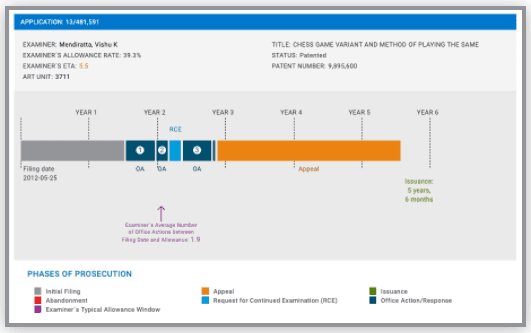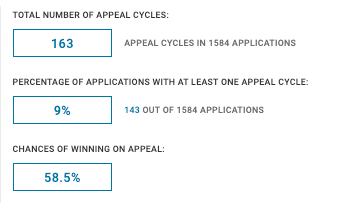The Queen’s Gambit: Making Small Upfront Sacrifices for Better Control of Patent Prosecution

There is an opening in chess called the “Queen’s Gambit” that contains a nugget of wisdom that applies to patent prosecution. In chess, a Queen’s Gambit involves sacrificing a queen-side pawn, which allows a player to secure control of the center of the board. In other words, a chess player makes a small upfront sacrifice to better their chances of ultimately winning the game. In patent prosecution, the best way to secure control of the patent process is by studying your assigned patent examiner and understanding the options that are available and their corresponding outcomes. Sacrificing time early in the patent process to research the circumstances surrounding your pending application can help you develop better patent prosecution strategies and set you up for a better chance of success. The best way to understand your options during patent prosecution is with USPTO patent data and analytics.
USPTO patent review: “chess game variant and method of playing the same”
In line with our chess analogy, we decided to pick a chess-related patent to review using the LexisNexis PatentAdvisor® patent analytics platform to illustrate how patent analytics can be used to inform patent prosecution decisions. Although it was ultimately granted in 2018, USPTO Patent Number 9,895,600 for a “Chess Game Variant and Method of Playing the Same” spent five-and-a-half years in patent prosecution before it issued. Additionally, the patent process was quite turbulent as it included receiving two office actions, filing a Request for Continued Examination (RCE), receiving two more office actions and finally filing for appeal. Knowing that each office action costs patent applicants around $3,000, on average, one can imagine the likely expense involved in seeing U.S. Patent No. 9,895,600 through to issuance. Looking at the patent data and patent statistics associated with the patent examiner who examined this application, we can see that the patent applicants could have made different choices, which could have ultimately saved time and money.

Patent examiner statistics and alternative patent prosecution strategies
When we use PatentAdvisor™ to assess the patent examiner who reviewed U.S. Patent No. 9,895,600, we quickly gather that he is experienced from the 1,660 total patent applications he has reviewed. We also recognize that he is statistically difficult, allowing only 39.3% of patent applications to grant, despite issuing an average of only 1.9 office actions per patent application. When U.S. Patent No. 9,895,600 applicants received a second office action, they crossed a threshold average and needed to decide among the options of filing an RCE, filing for an appeal or allowing their application to go abandoned.
Although the patent applicants decided to file an RCE, PatentAdvisor reveals that their patent examiner receives RCEs for only 18.6% of his total patent applications. When he does receive an RCE, there is an 87.1% chance that additional action, such as a second RCE or appeal, will be necessary. The PatentAdvisor Prosecution Guidebook also informs us that the patent examiner currently has some cases where RCEs were filed over two years ago that are still awaiting action—if this were the case when the patent applicants filed their RCE, they were running the risk of significant delays. Alternatively, of the 9% of patent applications reviewed by the patent examiner that led to an appeal cycle, 58.5% ended up winning on appeal. Knowing this information could have helped the patent applicants better prepare for all possibilities. To take better control of the patent prosecution process, choosing an immediate appeal over an RCE could have helped avoid the RCE and subsequent two office actions altogether.

Making sacrifices and conducting research early in the patent process can help patent applicants take better control of the patent prosecution process for better outcomes down the road. Time spent reviewing patent data and analytics is the Queen’s Gambit that helps patent professionals take control of patent prosecution. The LexisNexis PatentAdvisor patent prosecution platform gives professionals the tools they need to research, strategize and improve their patent prosecution performance.
Learn more by reading Patent Prosecution Analytics: No Longer Just a Nice to Have and watching the on-demand webinar.
Learn more about PatentAdvisor.
